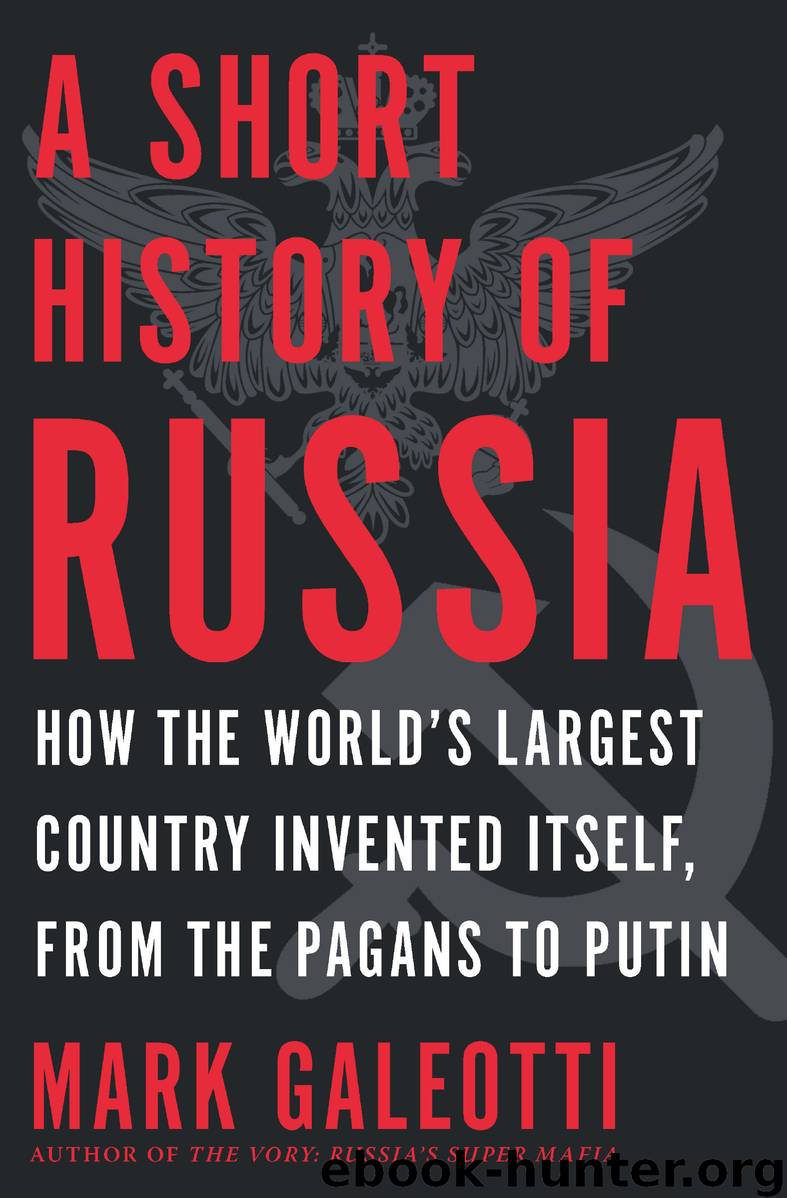A Short History of Russia by Mark Galeotti

Author:Mark Galeotti
Language: eng
Format: epub
Publisher: Hanover Square Press
Published: 2020-05-01T11:33:40+00:00
From Sophie to Catherine
Sophie Friederike Auguste von Anhalt-Zerbst-Dornburg was born to Prussian German aristocratic stock of considerable connections but relatively little fortune. As was the fate of girls in such circumstances, the expectation was that she would be married off for the good of the family, regardless of her own inclinations. Certainly the choice of her second cousin, Peter of Holstein-Gottorp, owed everything to politics and nothing to affection. Peter’s aunt, Tsarina Elizabeth, was eager to build ties to Prussia, and Sophie’s ambitious, manipulative mother was enthused by the prospect of a daughter on the Russian throne and a chance to spy for Frederick II of Prussia (she was eventually banned from the country for that very reason).
At age 15, Sophie traveled to Russia. Peter she found obnoxious, but she neither had much choice in the matter nor was she unaware of the opportunities for an otherwise impecunious young Prussian princess. It hardly hurt that Elizabeth clearly took a shine to her. So in characteristically enthusiastic style, Sophie threw herself into learning Russian, was baptized into the Orthodox faith with the Russian name Yekaterina—Catherine—and married Peter in 1745.
Peter did not improve on closer acquaintance and the two of them lived largely separate lives, taking lovers and pursuing their own interests. Peter loved to play with both toy soldiers and real ones, putting his servants through an elaborate and demanding drill of a morning. The vivacious and shrewd Catherine, by contrast, actively courted the all-important Guard regiments. When Peter III ascended the throne in 1762, he managed in short order to make himself even more unpopular, not least by prematurely withdrawing from the war with Prussia (he was a great admirer of Frederick the Great, even referring to him as “my master”).
The irony was that the German Tsarina Catherine seemed more loyal than the Russian-blood Tsar Peter. Having endured 17 years of marriage to the man, she was clearly prepared to seize the opportunity to rid herself of him, though, and take his place. While he was spending time with his relatives in his country estate, Catherine was back in St. Petersburg, plotting. Resplendent in a guards’ uniform, she visited the Izmailovsky and Semyonovsky regiments and appealed to them for their support. She had the church onside, she had key figures within the government onside, and she had the Guards. Peter was arrested and forced to abdicate, and shortly thereafter was killed, and Catherine II (r. 1762–96) was empress.
As usual, history, tradition and ritual were scoured to justify political pragmatism. Fortunately, a tenuous path could be tracked through Catherine’s genealogy to the Ryurikid dynasty, and Catherine I’s example of succeeding Peter the Great, however questionable at the time, now became considered precedent. Although there would be occasional word of conspiracies—and more serious threats from risings in the countryside—Catherine would remain firmly in power until her death.
Educated, intelligent and coming from the more cosmopolitan European nobility, she was committed to reform as a means of raising Russia to Western levels. If Peter
Download
This site does not store any files on its server. We only index and link to content provided by other sites. Please contact the content providers to delete copyright contents if any and email us, we'll remove relevant links or contents immediately.
| Arms Control | Diplomacy |
| Security | Trades & Tariffs |
| Treaties | African |
| Asian | Australian & Oceanian |
| Canadian | Caribbean & Latin American |
| European | Middle Eastern |
| Russian & Former Soviet Union |
The Secret History by Donna Tartt(16621)
The Social Justice Warrior Handbook by Lisa De Pasquale(11489)
Thirteen Reasons Why by Jay Asher(7788)
This Is How You Lose Her by Junot Diaz(5769)
Weapons of Math Destruction by Cathy O'Neil(5036)
Zero to One by Peter Thiel(4824)
The Myth of the Strong Leader by Archie Brown(4789)
Promise Me, Dad by Joe Biden(4447)
Beartown by Fredrik Backman(4415)
Stone's Rules by Roger Stone(4415)
How Democracies Die by Steven Levitsky & Daniel Ziblatt(4398)
The Fire Next Time by James Baldwin(4342)
100 Deadly Skills by Clint Emerson(4076)
A Higher Loyalty: Truth, Lies, and Leadership by James Comey(4032)
Rise and Kill First by Ronen Bergman(4012)
The David Icke Guide to the Global Conspiracy (and how to end it) by David Icke(3881)
The Farm by Tom Rob Smith(3872)
Secrecy World by Jake Bernstein(3782)
The Doomsday Machine by Daniel Ellsberg(3730)
